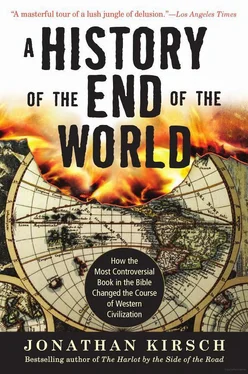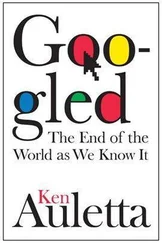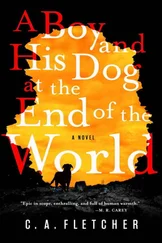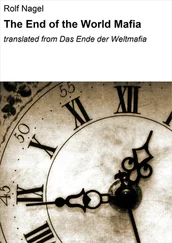“I saw in a sort of vision the Roman numerals flash across the wall of the room I was in,” writes Graves in The White Goddess. “I had been aware that the Apocalypse was referred by most Biblical scholars to the reign of Nero, not to that of Domitian. And yet my eye read ‘ Domitianus. ’” 157
Between Hildegard and Graves, we are given two very different but equally enlightening ways of understanding the visionary experience that came to be preserved in the book of Revelation. Hildegard, like John, reports what might described in the language of psychopathology as a series of auditory and visual hallucinations, and, again like John, she claims to have been given the divine power to see the secret meanings of the known world that are denied to others. That’s what prompts Adela Yarbro Collins to point out “a certain analogy between the creative imagination of the schizophrenic and the vision of the Apocalypse.” 158
Graves, too, claims that a flash of insight can reveal secret meanings that are hidden from everyone else. But when he refers to 666 as “St. John’s cryptogram,” he is crediting John, rather than God, for putting the secret meanings in the text in the first place. That’s quite another way of understanding the author of Revelation: John can also be seen as a compulsive game player who delights in ornamenting his text with riddles and puzzles, signs and symbols that are meant to engage and tantalize his readers and hearers. Indeed, John repeatedly uses a kind of trademark phrase—“He that hath an ear, let him hear”—as if to say that we must penetrate his own wordplay and mind games in order to “get it.” 159
Still, there is nothing cynical or calculating in John’s visions. He is clearly a driven man, wholly consumed with the fires of his own true belief and wholly persuaded that God has charged him with the task of spreading the word to the whole world. The point is made in the musings of perhaps the greatest apocalyptic preacher in history after John himself, the Dominican friar who set Florence afire in the fifteenth century, Girolamo Savonarola. Not coincidentally, Savonarola’s text of choice was Revelation, and his sermons must have resembled the ones that John himself delivered in the cities of Asia.
“I have sometimes thought, as I came down from the pulpit, that it would be better if I talked no more and preached no more about these things—better to give up and leave it all to God,” mused the fiery monk in the last sermon he delivered before his own martyrdom. “But whenever I went up into the pulpit again, I was unable to contain myself. To speak the Lord’s words has been for me a burning fire within my bones and my heart. It was unbearable. I could not but speak. I was on fire. I was alight with the spirit of the Lord.” 160
We do not know when or how John himself died. But we know that some of his most ardent readers, including both Savonarola and David Koresh, were literally consumed by the flames that they sparked with their own sermons on the Apocalypse. Their endings remind us that the book of Revelation is not—and was never intended to be—a safe and soothing book. Rather, John sought to set the souls of his readers and hearers on fire, and in that effort he was wholly successful.
John may have been convinced that he was hearing the voice of God, but the sheer virtuosity on display in the book of Revelation marks it as work of human contrivance—“an act of creative imagination,” as Adela Yarbro Collins puts it, “which, like that of the schizophrenic, withdraws from real experience in the everyday world.” 161He is an astute propagandist who expertly stokes the hopes and terrors of his readers and hearers, an accomplished showman who delights in confounding and amazing his audience. But surely John believes that he is speaking the truth, as God gave him the light to see the truth, when he reveals what he calls “things which must shortly come to pass.” 162
John does not seek to win praise as a great author, nor can the book of Revelation be safely contained and dismissed as a work of literature. Rather, he clearly means to win converts for Christianity, and he wants his message, so fierce and so dire, to reach the whole world. And, significantly, he does not intend his message to endure for the ages for the simple reason that he is convinced—and wants to convince his audience—that the end of the world is nigh: “Behold, I come quickly,” John hears Jesus Christ say in his vision. “Blessed is he that keepeth the sayings of the prophecy of this book. 163
Surely the greatest of all the ironies in John’s life and work is the simple and unavoidable fact that the things he predicts in the book of Revelation did not come to pass quickly or, for that matter, at all. John himself would have been shocked and heartbroken to know that we are all still here to read what he wrote two thousand years ago. That is why the book of Revelation and the apocalyptic tradition in Judaism and Christianity have been called, aptly if also poignantly, “the history of a delusion.” 164To put it another way, Revelation is the history of the end of the world and, as we shall see for ourselves, the history of a world that refused to end.
4. The Apocalyptic Invasion
I don’t know what is happening in other parts of the world, but in this country where we live the world no longer announces its end but demonstrates it.
POPE GREGORY THE GREAT (540–604)
When Jerome set himself to the task of translating the Bible into Latin in the fourth century, he was forced to confront all the bafflements and contradictions of the book of Revelation. The tale that John tells, as we have seen, is hard to follow and even harder to understand. The names, colors, numbers, and images that John conjures up are freighted with secret meanings, but exactly what they are supposed to signify is mostly a matter of speculation. At certain moments, John salts his text with what can only be described as brainteasers. Now and then, John explains a few of the symbols and solves a few of the riddles, but even when he does, the answers only raise more questions: “Revelation,” concluded the frustrated Jerome, “has as many mysteries as it does words.” 1
Some of the most famous mysteries, like the identity of the Roman emperor whose name is enciphered as the satanic number 666, are hidden in plain sight in the text. Other mysteries are to be found in questions that seem to ask themselves: John insists that the world will end soon, but he never reveals exactly when. And some mysteries are woven deeply and intricately into the theological fabric of the text itself. Where in the book of Revelation, for example, is the kind and gentle teacher whom Jesus is depicted to be in some of most exalted passages of the Gospels? “Love your enemies,” says Jesus in the Gospel of Matthew, “bless them that curse you, do good to them that hate you, and pray for them which spitefully use you, and persecute you.” 2By contrast, the author of Revelation knows only a violent and vengeful Jesus, “clad in a robe dipped in blood,” armed with a two-edged sword, mounted on a warhorse, and commanding the “armies of heaven” in a war of extermination against his enemies. 3
“From his mouth issues a sharp sword with which to smite the nations, and he will rule them with a rod of iron,” writes John, who seems to delight in describing the carnage that the celestial warrior-king will leave behind on the battlefield after the war between God and Satan. “Come, gather for the great supper of God,” calls an angel to the vultures in midflight, “to eat the flesh of kings, the flesh of captains, the flesh of mighty men, the flesh of horses and their riders, and the flesh of all men, both free and slave, both small and great.” 4
Читать дальше










